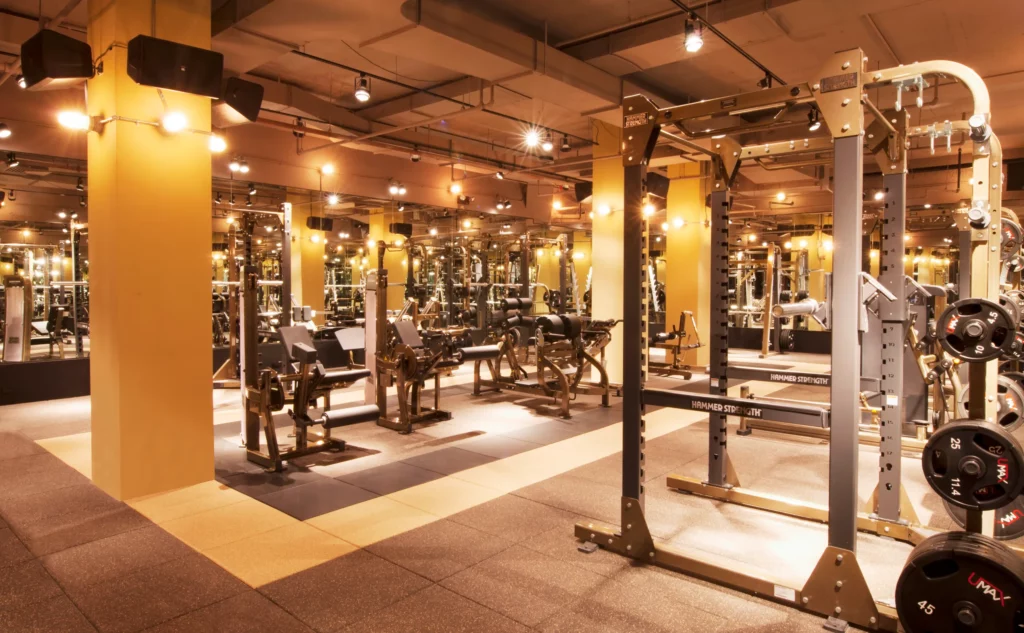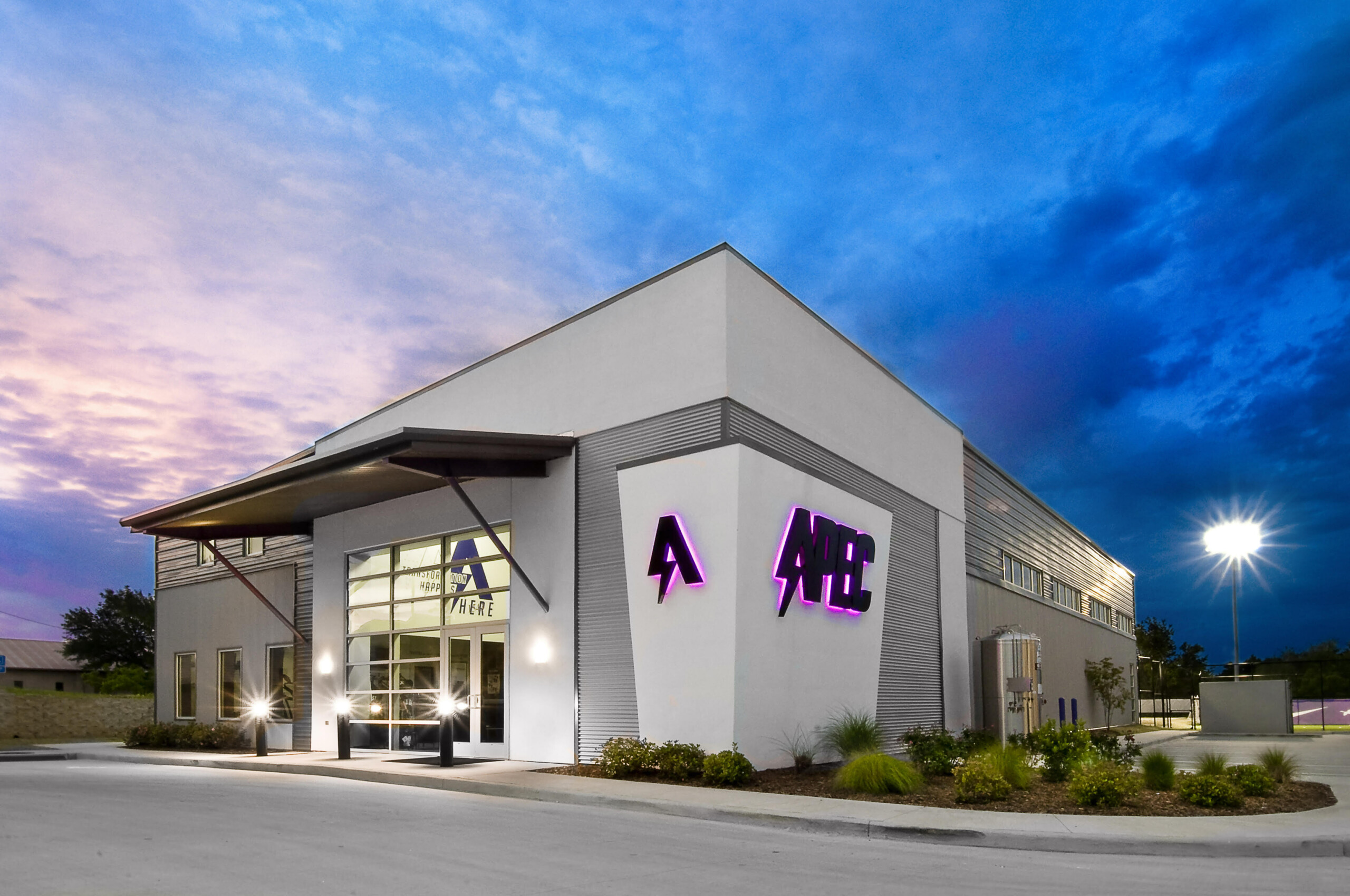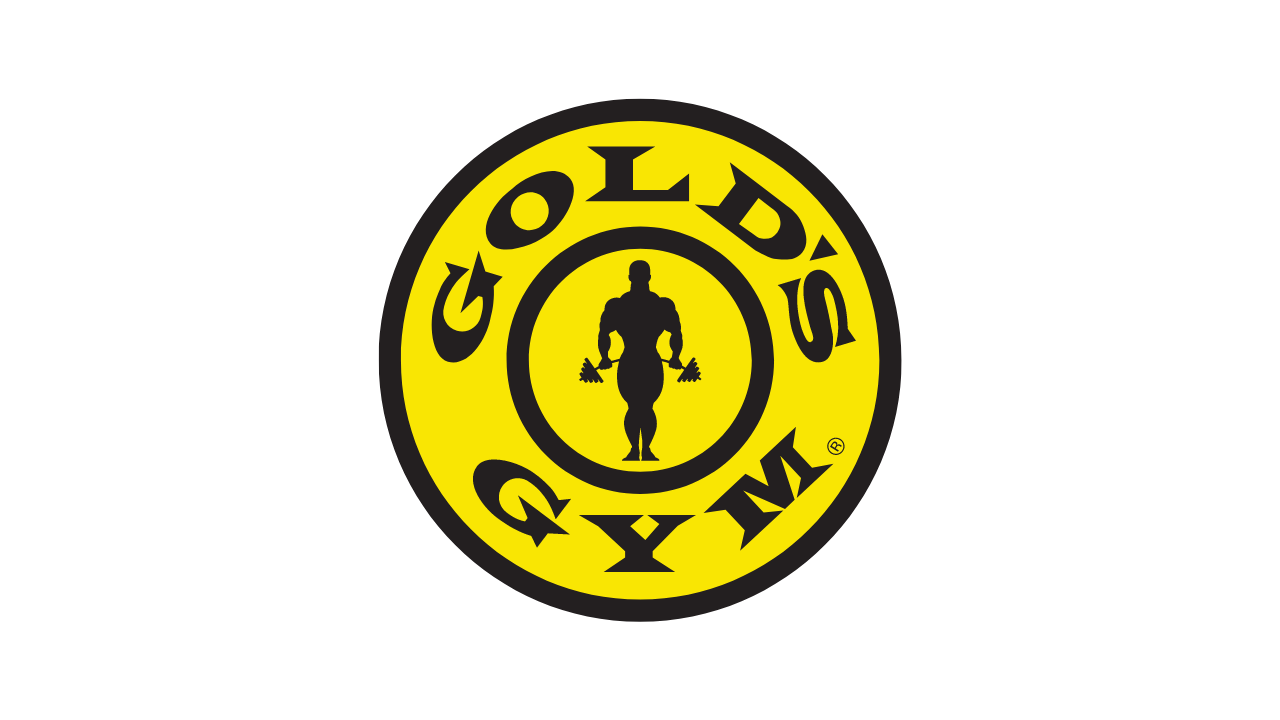How much space is required for a commercial gym?
The amount of space you need for a commercial gym is at least 1,000 square feet, because experts recommend having 36 square feet per member and 45-75 square feet per piece of equipment.

Your gym business model will determine exactly how many square feet you need for your gym, but if you have at least 1,000 square feet then you can start a small gym. However, according to the Association of Fitness Studios, the average size for a fitness studio is 3,813 square feet (with big box gyms having a lot more space, many with 40,000 square feet and up to even 70,000 square feet).
| Gym Type | Average Size (Square Meters) | Average Size (Square Feet) | Minimum Space Required | Ideal Gym Capacity | Best For |
|---|---|---|---|---|---|
| Small Boutique Gym | 150 – 300 m² | 1,600 – 3,200 ft² | 100 m² (1,100 ft²) | 20 – 50 members | Specialized classes, high-end training experience. |
| Standard Commercial Gym | 400 – 1,000 m² | 4,300 – 10,700 ft² | 350 m² (3,800 ft²) | 100 – 300 members | Traditional gyms with general fitness equipment. |
| Large Fitness Center | 1,200 – 3,000 m² | 13,000 – 32,000 ft² | 1,000 m² (10,700 ft²) | 500+ members | High-traffic gyms with various training zones. |
| CrossFit Box | 200 – 500 m² | 2,100 – 5,400 ft² | 150 m² (1,600 ft²) | 15 – 50 participants/session | Strength & conditioning group training, functional fitness. |
| Personal Training Studio | 100 – 250 m² | 1,100 – 2,700 ft² | 80 m² (860 ft²) | 5 – 20 clients at a time | One-on-one or small group training sessions. |
| Yoga or Pilates Studio | 80 – 200 m² | 860 – 2,150 ft² | 60 m² (645 ft²) | 10 – 30 participants/class | Low-impact fitness, flexibility, and mind-body workouts. |
| Martial Arts or Boxing Gym | 150 – 400 m² | 1,600 – 4,300 ft² | 120 m² (1,300 ft²) | 20 – 75 students | Self-defense, combat sports, and martial arts training. |
| Sports Performance Facility | 800 – 2,500 m² | 8,600 – 26,900 ft² | 600 m² (6,500 ft²) | 50 – 150 athletes per day | Athletic development, team sports training. |
If you’re looking to learn how to open a gym, one thing you should consider is how many square feet do you need for a gym. Read further to discover the space required for a commercial gym, decide on what equipment you need to start a gym (different types of gyms have different equipment needs, and therefore, different space considerations, etc.), and more.
- The space required for a commercial gym with little to no equipment is 850 to 1,000 square feet.
- The space required for a commercial gym with a large membership and lots of equipment is 3,000 to 8,000 square feet.

There are many reasons to open a gym: The opportunity to flex your entrepreneurial muscles. The opportunity to help others maximize their fitness potential and reach their goals. The opportunity to be your own boss. But before you jump headlong into this dream of being a fitness professional, you should first make sure that you have an adequate space to conduct your business, and that involves understanding the cost to open a gym, and how many members you need for a successful gym, based on the type of gym you want to start, and the gym business model you choose (ex: deciding to open a yoga studio, or open a small gym, or start an online personal training business is different than doing a a big box gym franchise buildout).
If you’re planning to open a commercial gym, then understanding gym area requirements is essential for designing a functional and efficient fitness space. From determining the standard size of a gym in meters to calculating gym capacity and evaluating gym floor plans with dimensions, proper planning ensures you maximize space while accommodating equipment and members comfortably. Get access to all the free fitness templates you need, including gym business plans, gym contract templates, gym handbooks, fitness facility management resources, and more.
So, how much space is required for a commercial gym? The answer depends on factors like gym layout, equipment selection, and member capacity. The average size of a gym varies, but commercial gyms typically range from 3,000 to 6,000 square feet, while boutique studios require less space. If you’re researching the ideal gym size, looking at the minimum area required for a commercial gym in different regions, such as India, can provide insight into space planning. Understanding average gym square footage and standard gym sizes in meters can help optimize space utilization. With Exercise.com, you can efficiently manage gym operations, track membership growth, and streamline scheduling. Get a demo now and see how our platform supports gym owners in managing their fitness facilities.
From gym capacity calculation to determining the minimum space required for a gym, Exercise.com provides the best gym management software for fitness business owners. Regardless of the size of your gym, an easy way to simplify your daily operations is to use the best gym business management software. Whether you’re designing a gym floor plan with dimensions, setting up a boutique fitness studio, or managing a large commercial gym, our platform helps you optimize operations and improve member experience. Get a demo now.

Gym Standard Dimensions
So how much space is required for a commercial gym? How many square feet do you need for a gym? What is the average area of a commercial gym space? How big is a gym exactly? To answer these questions properly for your specific context, you should consider the following: What is the function of your commercial gym space and how do your want the traffic to flow within that space.
| Gym Type | Standard Size (Square Feet) | Standard Size (Square Meters) |
|---|---|---|
| Small Boutique | 1,500 – 2,500 | 139 – 232 |
| Mid-sized | 3,000 – 5,000 | 279 – 465 |
| Large Commercial | 10,000+ | 929+ |
The standard gym size varies significantly based on the type of facility. Small gym size setups like boutique studios typically range from 1,500 to 2,500 square feet, providing a cozy and personalized environment. Mid-sized gyms offer a broader range of equipment and classes, with sizes between 3,000 to 5,000 square feet. Large commercial gyms, often exceeding 10,000 square feet, cater to a vast membership with diverse fitness options. Understanding gym size dimensions is crucial when planning to open my own gym becoming personal trainer.
Gym Equipment Space Requirements
| Equipment Type | Space Required (Square Feet) | Space Required (Square Meters) |
|---|---|---|
| Treadmill | 30 – 50 | 2.8 – 4.6 |
| Elliptical Trainer | 20 – 30 | 1.9 – 2.8 |
| Weight Bench | 20 – 30 | 1.9 – 2.8 |
| Multi-Station Machine | 50 – 100 | 4.6 – 9.3 |
| Free Weights Area | 50 – 100 | 4.6 – 9.3 |
The space required for gym equipment ensures that members can exercise safely and comfortably. For example, a treadmill typically requires 30 to 50 square feet, while a multi-station machine may need up to 100 square feet. Planning these gym dimensions meticulously is vital for maintaining an efficient and appealing workout space. When considering how much space do you need for a gym, factor in both the equipment footprint and additional circulation space.
Average Size of a Gym / Average Gym Size in Square Feet
| Gym Type | Average Size (Square Feet) | Average Size (Square Meters) |
|---|---|---|
| Small Boutique | 1,500 – 2,500 | 139 – 232 |
| Mid-sized | 3,000 – 5,000 | 279 – 465 |
| Large Commercial | 10,000+ | 929+ |
The average size of a gym can vary, but generally, a small boutique gym spans 1,500 to 2,500 square feet, providing a focused and personalized fitness experience. Mid-sized gyms, often found in urban areas, range from 3,000 to 5,000 square feet, offering a balance between equipment variety and personal space. Large commercial gyms, typically over 10,000 square feet, provide extensive facilities and services. These average gym size in square feet metrics help in planning how big does a gym need to be to meet membership demands.
Gym Area per Person
| Gym Type | Area per Person (Square Feet) | Area per Person (Square Meters) |
|---|---|---|
| Small Boutique | 10 – 15 | 0.9 – 1.4 |
| Mid-sized | 10 – 15 | 0.9 – 1.4 |
| Large Commercial | 10 – 20 | 0.9 – 1.9 |
Calculating the gym area per person ensures that members have sufficient space to exercise comfortably and safely. A general guideline is 10 to 15 square feet per person in smaller and mid-sized gyms. Large commercial gyms may allocate up to 20 square feet per person to accommodate more diverse activities and equipment.
When considering how to start a gym business, it is essential to grasp the gym size standards and fitness center space requirements. The average square footage of a gym is influenced by the type of services offered and the target clientele. Smaller setups may fit into an 800 sq ft gym layout, while larger facilities must meet more extensive gym design standards. Calculating gym members per square foot helps in optimizing space utilization, ensuring a good experience for members.
For those looking to understand the typical gym size and the minimum area required for gym operations, these plans should include details on just how much space for gym operations is needed, a business plan that contemplates gym area size, and a fulsome understanding of gym size standards along with any regulatory or gym insurance concerns.
Utilizing a gym standard size in meters or gym dimensions in feet calculation (work with a real estate professional who understands fitness club layout needs, and can help in accurately planning the layout. Resources such as gym design standards pdf can provide valuable insights. Remember, whether it’s a small studio or a large commercial space, adhering to the standard size of gym ensures safety and efficiency, paving the way for a successful fitness venture.
Popular Gym Franchise Space Requirements
Choosing the right gym franchise requires understanding space requirements, business models, and target demographics. Below is a breakdown of top gym franchise space requirements, including minimum area required for commercial gym setups.
| Gym Franchise | Average Space Required (Square Meters) | Average Space Required (Square Feet) | Best For |
|---|---|---|---|
| Planet Fitness | 1,500 – 2,300 m² | 16,000 – 25,000 ft² | Large-scale, budget-friendly gyms with high memberships. |
| Anytime Fitness | 150 – 500 m² | 1,600 – 5,400 ft² | 24/7 access, small community-driven fitness spaces. |
| Gold’s Gym | 1,000 – 2,500 m² | 10,700 – 26,900 ft² | Full-service gym with group classes, personal training, and strength training. |
| F45 Training | 200 – 500 m² | 2,100 – 5,400 ft² | HIIT-based group training and franchise scalability. |
| Orangetheory Fitness | 300 – 700 m² | 3,200 – 7,500 ft² | Heart-rate monitored interval training with a boutique fitness model. |
| Crunch Fitness | 1,000 – 1,800 m² | 10,700 – 19,400 ft² | Affordable gym memberships with extensive group fitness classes. |
| Snap Fitness | 300 – 700 m² | 3,200 – 7,500 ft² | Small footprint gym with 24/7 access and flexible model. |
| 9Round Fitness | 100 – 200 m² | 1,100 – 2,150 ft² | Compact space focused on circuit-based kickboxing workouts. |
| UFC Gym | 1,000 – 2,000 m² | 10,700 – 21,500 ft² | Martial arts, boxing, and high-performance fitness training. |
| LA Fitness | 2,500 – 4,000 m² | 26,900 – 43,000 ft² | Full-service gym with pools, courts, and large-scale facilities. |
Key Considerations When Choosing a Gym Franchise
✔ Commercial gym size in meters varies significantly based on franchise type.
✔ Gym floor plan with dimensions should include equipment zones, training areas, and client amenities.
✔ Gym capacity calculation determines how many members a facility can accommodate safely.
✔ Minimum gym size for a franchise depends on operational needs, lease costs, and market demand.
Why Use Exercise.com for Gym Management?
📢 Exercise.com is the best gym management software for independent gyms and franchises of all sizes. Features include:
✅ Franchise-wide member management with automated billing.
✅ Scalable software solutions for single locations and multi-gym franchises.
✅ Custom-branded apps to enhance client engagement.
✅ Business analytics tools to optimize space and membership retention.
📢 Need help managing your gym franchise? Request a demo of Exercise.com today! 🚀

The Space Required for a Commercial Gym Depends on Its Function
How many square feet do you need for a gym? Experts recommend 36 sq ft per member and 45-75 sq ft per piece of equipment. Read on to learn about how much space is required for a commercial gym. The minimum space required for a commercial gym is 2,000 square feet.
According to the Department of Defense Education Activity (DoDEA), the size of an average high school weight room and locker room is a combined 1,650 square feet. So, unless you want to lose clients to your local high school, 2,000 square feet is a good starting point for the area for your gym.
It’s important to consider what is the purpose or function of your space. If you operate a yoga studio, a Pilates studio, or an aerobics fitness studio with no free weights and minimal equipment, then you can get away with an 850-1,000-square-foot space. If you are live-streaming classes online through your custom-branded fitness trainer app, then you too can get away with a smaller commercial space.
The America College of Sports Medicine recommends 36 square feet per member (and up to 225 square feet per member in the age of social distancing and Covid-19) for a commercial gym space and 45 to 75 square feet per piece of equipment. Thus, if you’re operating a full-service gym with hundreds of members, free weight stations, and elliptical machines and stationary bikes, you’re looking at 3,000 to 8,000 square foot space.
Read More:
The Square Feet Area of a Gym Is Affected by the Flow of the Space
The next consideration for the area needed for your gym is the operational and creative flow you want to create in your space. You want to position and design your workspace in such a way that optimizes both the productivity and aesthetics of the environment.
Will you have a reception desk and lobby? You should allocate five to ten percent of your space to that area. Will you have a weight room or a locker room? How closely will either of them be positioned to the main workout room? Is your furniture and exercise equipment located in areas that increase or impede the flow of foot traffic in your facility? How you answer these questions will help inform you whether or not your commercial gym size is too large, too small, or just right.
Understanding Gym Space Requirements
When planning your gym layout, you need to consider the gym space requirements based on the type of facility you are operating. The minimum area required for a commercial gym will depend on your services, the number of members you expect, and the type of equipment you use.
For instance, the gym standard size in feet varies significantly between small boutique gyms and large commercial fitness centers. A small fitness studio may only require small gym dimensions of 1,000 to 3,000 square feet, whereas a full-service gym could need anywhere from 10,000 to 50,000 square feet.
If you’re wondering how big should a gym be, a good rule of thumb is to calculate gym capacity per square foot based on how many gym members you expect at peak hours. The minimum space required for a gym in India, for example, may differ from U.S. or European gym layouts due to differences in available real estate and member density.
Average Gym Size Considerations
The average gym size square feet for commercial gyms typically falls within the range of 3,000 to 8,000 square feet, depending on the business model. If you need a large multipurpose facility, the average gymnasium size can be well over 20,000 square feet.
To determine how many square feet is a gym, consider the following breakdown of space:
- Cardio Area – Requires approximately 100 square feet per treadmill, elliptical, or rowing machine.
- Weightlifting Area – Needs 40 to 50 square feet per piece of strength training equipment.
- Functional Training Space – Should be at least 500 to 1,000 square feet for group fitness or open workout areas.
- Locker Rooms and Showers – Often take up 10 to 20% of total gym square footage.
- Office and Reception – Typically, 5 to 10% of the overall gym square feet allocation.
The average size of a gym also depends on how many members it serves. If you’re trying to determine how many gym members per square foot your facility can handle, a general estimate is around 10 to 15 square feet per member in a standard workout setting.
Converting Gym Size Measurements
If you are working with international dimensions, understanding gym size in meters and gym dimensions in meters is essential. The standard size of a gym in meters varies by gym type:
- Small Gym – Approximately 90 to 280 square meters
- Medium-Sized Gym – Ranges from 280 to 750 square meters
- Large Commercial Gym – Often exceeds 750 square meters
For those planning large-scale facilities, the question of how many square feet is a gymnasium depends on its intended use. A school or community center may require standard gym dimensions of 5,000 to 10,000 square feet, while professional training facilities can be significantly larger.
Determining the Right Size for Your Gym
If you’re asking, how big is the average gym?, the answer varies based on whether you’re setting up a boutique gym, a mid-sized fitness studio, or a large-scale commercial fitness center. The best approach is to analyze how much area is required for a gym based on your specific business needs.
By carefully assessing gym square footage, traffic flow, and equipment placement, you can ensure that your gym is neither too cramped nor too spread out. Keeping the right balance between functionality and spaciousness will create a welcoming environment for members while maximizing efficiency.
Read More:
- Commercial Gym Flooring Ideas
- Commercial Gym Lighting Ideas
- Commercial Gym Layout Ideas
- Commercial Gym Mirror Ideas
- Commercial Gym Organization Ideas

How many square feet is an average gym?
The size of an average gym can vary widely based on the type of facility and the services offered. Commercial gyms can range from 3,000 to 40,000 square feet or more. Smaller, specialized studios may be as little as 800 to 2,000 square feet.
Is 1,000 square feet enough for a gym?
1,000 square feet may be sufficient for a small, specialized fitness studio, such as a boutique yoga or personal training space. However, it may be limiting for gyms that require multiple types of equipment and areas for group classes.
Is 2,000 square feet enough for a gym?
A 2,000-square-foot space can accommodate a moderate range of gym equipment and possibly one or two small group class areas, making it more versatile than a 1,000-square-foot space.
Is 3,000 square feet enough for a gym?
A 3,000-square-foot gym offers even more versatility, potentially allowing for multiple group fitness areas, a wider range of equipment, and possibly even some specialized amenities.
How many square feet is needed for a CrossFit gym?
For a CrossFit gym, a space of at least 3,000 to 5,000 square feet is generally recommended to accommodate equipment, class areas, and safety zones.
How many square feet is needed for a sports performance gym?
Sports performance gyms often require more space for specialized equipment and functional training areas; 5,000 to 10,000 square feet could be adequate.
How many square feet is needed for a martial arts gym?
Martial arts gyms may require anywhere from 1,500 to 5,000 square feet, depending on the number of practice areas and additional amenities like changing rooms or spectator areas.
How many square feet is needed for a yoga studio?
For a yoga studio, 1,200 to 1,800 square feet can suffice, offering room for a large practice area, small reception, and perhaps a changing room.
What are the other facility and space requirements for a gym?
Other requirements can include adequate parking, restroom and shower facilities, storage space for equipment, and possibly a reception or retail area.
Are bigger gyms better?
Bigger gyms can offer more amenities and services but may come with higher operating costs. The “best” size for a gym depends on the target market, business model, and operational considerations.
How many people can fit in a 1,000 sq ft space?
In a 1,000 sq ft space, depending on the layout and use case, you could potentially fit up to 16-20 people for a group fitness class, assuming an average of 50 square feet per person for safe and comfortable movement.
How can Exercise.com help my gym?
Exercise.com provides a comprehensive gym management software that helps gym owners run their businesses more effectively. From online booking and payment processing, workout plan creation and gym check-ins, you can run your entire gym business in one place.
And if you need a little help managing your business in your commercial space, reach to us at Exercise.com. Book a demo today!
Read More: What is a commercial gym?

References:












